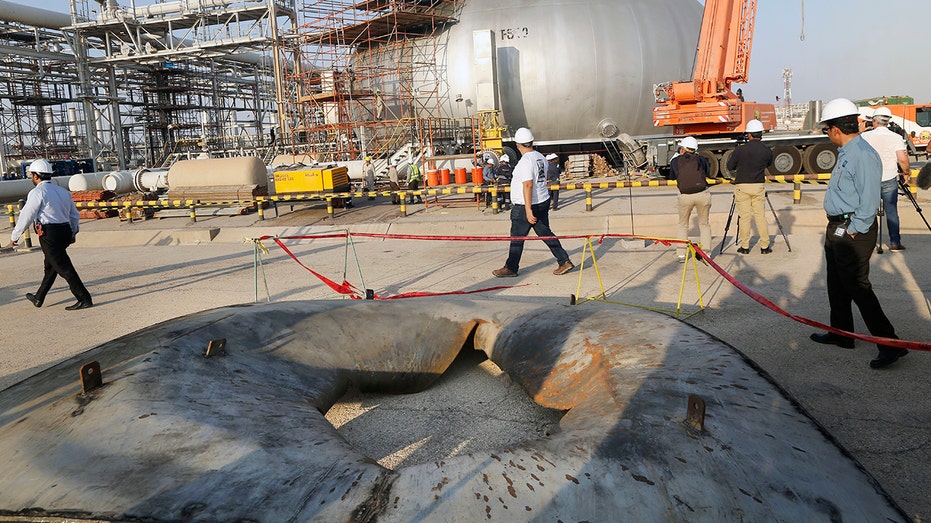Saudi oil attacks hit home
Global crude oil prices remain on edge after last weekend’s unprecedented drone missile strikes on key oil facilities in Saudi Arabia disabled 5% of global supply.
Not only does this raise concerns about the security of supply in Saudi Arabia, but really all around the globe. In a world where record U.S. oil production brought an air of complacency to oil supply risk, the attack has added a new sobering reality.
The style of the attacks on Saudi Aramco’s Abqaiq and Khurais oil facilities may add a permanent risk premium to oil and gasoline prices -- and that means your gas and diesel prices will be higher than they would have otherwise been. While Saudi Arabia is saying it can quickly bring supply back online, the shock to the global oil market will be felt for years.
Prices at pump jump

US gas prices up after Saudi oil attack
The short-term impact has already hit your wallet. From Monday to Thursday of this week, in a time-period when prices typically fall, the national average for unleaded regular gasoline jumped 10 cents to $2.66, according to AAA.
That price spike was caused by the attack and may not disappear after the facilities come back online. The reason is buyers and sellers of oil will now add an insurance risk premium to the price of oil to deal with the new type of threat the global market faces.
The recent attack shows vulnerability at a major world oil site with massive security that was supposed to be impenetrable. "Neither Saudi Arabia nor the U.S. have sufficient numbers and types of defense systems to cover all of the energy infrastructure assets, even with the U.S.-made Patriot surface-to-air missile batteries positioned in the country,” industry and security experts told the Wall Street Journal.

A hole in part of an Aramco separator is seen on the ground as workers fix damage from the Sept. 14 attack in Abqaiq, near Dammam in the Kingdom's Eastern Province. Saudi Arabia allowed journalists access Friday to the site of a missile-and-drone att
So even though the U.S. is now the biggest oil and gas producer in the world, we are not totally immune to oil disruptions in what is a global marketplace. The gasoline price spike at the pump, which is likely to continue, is evidence of that.
Short and long-term realities

Workers fix damage in Aramco's oil separator after the Sept. 14 attack in Abqaiq, near Dammam in the Kingdom's Eastern Province. (AP Photo/Amr Nabil)
In the short run, price action might be about how quickly the Saudis can bring production back online. But in the long run, it really is going to be about how can they protect oil supply and refineries in the future.
Until we have an answer to this question, the risk premium will be higher. The risk premium is a real price per barrel number that assesses risk in the crude oil market.
It's the same with any insurance we all buy where the base cost of the premium is tied to the risk facing the purchaser. The new risk of these types of drone attacks will add at least $2 to a barrel of oil and probably at least 10 cents to a gallon of gasoline -- and more like 20 cents for diesel. That won’t go away until the risk to supply goes down.

A man stands in front of the Khurais oil field in Khurais, Saudi Arabia, which was hit in the attack. Saudi officials brought journalists Friday to see the damage done in an attack the U.S. alleges Iran carried out. (AP Photo/Amr Nabil)
Complacency about the availability of supply has to end. We have to look at the real world with its real risks.
The U.S. has achieved a measure of energy independence, but we now have to be aware that energy is still a global market with global risks.
CLICK HERE TO READ MORE ON FOX BUSINESS




















